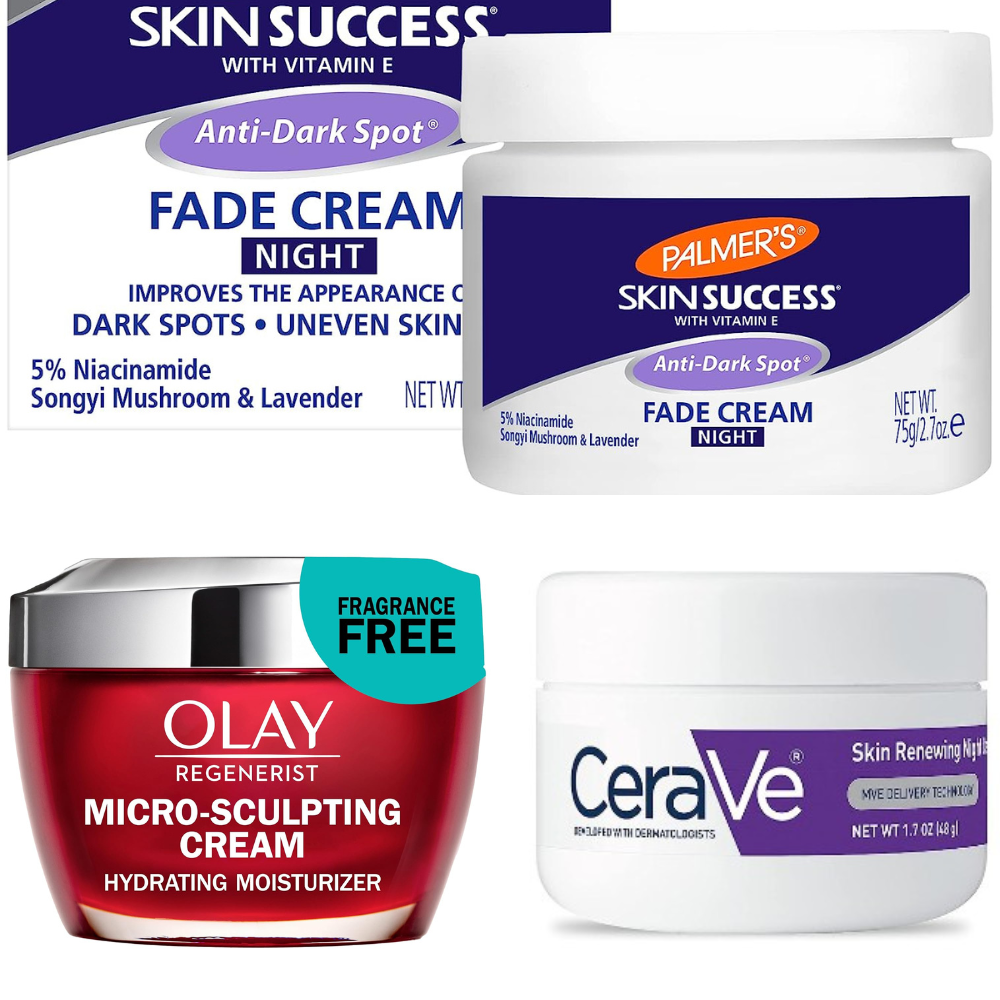Key Takeaways:
- Understanding the benefits and proper use of niacinamide and vitamin C can significantly improve skin health.
- Combining niacinamide and vitamin C in a skincare routine can address a wide range of skin concerns, including uneven skin tone and signs of aging.
- It's essential to know how to layer niacinamide and vitamin C correctly to avoid skin irritation and maximize their skin benefits.
The Dynamic Duo: Niacinamide and Vitamin C
When it comes to maintaining healthy skin, niacinamide and vitamin C are two powerhouse ingredients that often come up in conversations with board-certified dermatologists. Niacinamide, a form of vitamin B3, and vitamin C, a potent antioxidant, both offer a plethora of skin benefits that can transform your skincare routine. But what exactly makes this combination so powerful?
Niacinamide helps to strengthen the skin barrier, regulate oil production, and reduce inflammation, making it ideal for those with sensitive skin. On the other hand, vitamin C is known to brighten skin, increase collagen production, and protect against UV rays and environmental stressors. When used together, they can provide complementary benefits that lead to a more radiant and even skin tone.
The Science Behind Niacinamide and Vitamin C
Understanding the science behind these ingredients is crucial for anyone looking to improve their skin health. Niacinamide works by helping to produce ceramides and fatty acids, which are essential components of the skin barrier. This fortification helps to keep moisture in and irritants out. Additionally, niacinamide can help to reduce pigment production, which in turn can reduce hyperpigmentation and dark spots.
Vitamin C, particularly in its pure ascorbic acid form, is a potent vitamin that can neutralize reactive oxygen species (ROS) generated by UV radiation and environmental pollutants. This action helps to prevent skin damage and the visible signs of aging. Moreover, vitamin C can improve redness and promote a more even complexion by inhibiting the enzyme responsible for melanin production.
Incorporating Niacinamide and Vitamin C into Your Skincare Routine
To reap the benefits of both niacinamide and vitamin C, it's important to incorporate them into your skincare routine correctly. A common question is whether to apply niacinamide or vitamin C first. The general rule of thumb is to apply skincare products from thinnest to thickest consistency. Typically, vitamin C serums are lighter and should be applied before thicker niacinamide serums.
However, it's not just about the order of application; it's also about the timing. Some prefer to use vitamin C in their morning routine to take advantage of its antioxidant properties during the day, while niacinamide can be used at night to help repair the skin barrier and calm the skin after a day of exposure to environmental aggressors.
The Myth of Incompatibility
There's a common misconception that niacinamide and vitamin C cannot be used together due to the potential for niacinamide to convert to nicotinic acid, which can cause skin irritation. However, this conversion requires very specific conditions, such as a high-temperature environment, which are unlikely to occur on the skin. Modern formulations of stable forms of vitamin C and niacinamide are designed to work in harmony, allowing you to combine niacinamide and vitamin C without concern.
Sensitive Skin Considerations
For those with sensitive skin, the idea of combining two active ingredients might seem daunting. However, both niacinamide and vitamin C are generally well-tolerated by sensitive skin types. It's always recommended to perform a patch test before introducing new skincare products into your skincare routine. Start with low concentrations of both ingredients and gradually increase as your skin builds tolerance.
Maximizing Benefits with Proper Application Order
When it comes to your skincare routine, the order in which you apply products is nearly as crucial as the products themselves. For those incorporating both vitamin C and niacinamide serums, the sequence can make a significant difference. A board-certified dermatologist would likely recommend applying the vitamin C serum first, as it typically has a lower pH and needs to penetrate the skin deeply to provide antioxidant protection against sun damage and to stimulate collagen production. This pure vitamin C, often listed as L-ascorbic acid on ingredient labels, is a potent ally in the fight against dull skin.
After the vitamin C serum has been absorbed, it's time for the niacinamide serum. Unlike vitamin C, niacinamide doesn't depend on a low pH to be effective and can be applied topically in a more neutral environment. By layering niacinamide after vitamin C, you're ensuring that both active ingredients can work at their optimal pH levels without compromising their integrity or effectiveness. This method of application not only maximizes the anti-aging effects of both ingredients but also helps to reinforce the skin's barrier, leading to healthier, more resilient skin.
Understanding the Biochemical Synergy
Diving deeper into the science, it's fascinating to see how these ingredients interact on a biochemical level. Vitamin C is an essential nutrient that our bodies cannot produce, which is why applying it topically through a skincare routine is so beneficial. It's a powerful antioxidant that helps to neutralize free radicals and plays a pivotal role in collagen synthesis. On the other hand, niacinamide helps the skin produce nicotinic acid, which works alongside vitamin C to improve the overall appearance of the skin.
The beauty of using both vitamin C and niacinamide lies in their complementary actions. While vitamin C is busy fending off environmental aggressors and repairing sun damage, niacinamide is hard at work regulating oil production, reducing inflammation, and improving the skin's barrier function. This synergy not only helps to brighten dull skin but also supports the skin's natural healing processes. By understanding and harnessing this biochemical partnership, individuals can create a skin care routine that's greater than the sum of its parts, leading to a visibly healthier and more radiant complexion.
Addressing Uneven Skin Tone and Dark Spots
Uneven skin tone and dark spots are common skin concerns that can be effectively addressed by using both niacinamide and vitamin C. Niacinamide's ability to regulate pigment production complements vitamin C's property of reducing inflammation, which can lead to hyperpigmentation. Together, they can significantly reduce the appearance of dark spots and promote an even skin tone.
Boosting Anti-Aging Effects
The anti-aging effects of niacinamide and vitamin C are impressive when used in tandem. Niacinamide's role in reinforcing the skin barrier and vitamin C's ability to increase collagen production can both work to diminish the appearance of fine lines and wrinkles. This powerful combination can help to maintain youthful, resilient skin.
Protecting Against Environmental Stressors
Environmental stressors like UV rays and pollution can cause significant skin damage. Both niacinamide and vitamin C offer protection against these harmful effects. Niacinamide helps to rebuild damaged skin, while vitamin C provides a shield against oxidative stress, making them ideal for those living in urban environments or spending time outdoors.
Final Thoughts on Layering Niacinamide and Vitamin C
Layering niacinamide and vitamin C can be a game-changer for your skin care routine. It's important to listen to your skin and adjust the usage of these ingredients based on your skin's response. Always ensure that you're using high-quality skin care products and consult with a dermatologist if you have any concerns or skin conditions.


Can niacinamide and vitamin C be used together?
Yes, niacinamide and vitamin C can be used together. While there was past belief that these two ingredients neutralize each other’s effects, recent research suggests they can complement each other well. However, it's always best to patch-test new products and consult with a dermatologist if you have concerns.
Can I use niacinamide and vitamin C together?
Yes, you can use niacinamide and vitamin C together. Modern formulations are designed to be compatible, and when used correctly, they can provide significant skin benefits.
How should I layer niacinamide and vitamin C into my skincare routine?
Generally, you should apply skin care products from thinnest to thickest consistency. Apply vitamin C serums first, followed by niacinamide serums. Consider using vitamin C in the morning and niacinamide at night.
Will niacinamide and vitamin C irritate my sensitive skin?
Both niacinamide and vitamin C are typically well-tolerated by sensitive skin. However, it's always best to start with low concentrations and perform a patch test before fully incorporating them into your skincare routine.

Niacinamide and vitamin C are two of the most effective ingredients for achieving healthy, radiant skin. They offer a range of benefits from strengthening the skin barrier to protecting against environmental damage. When used together, they can address a variety of skin concerns, including uneven skin tone, dark spots, and signs of aging. It's essential to layer these ingredients correctly and consider your skin type and sensitivities to maximize their benefits.














